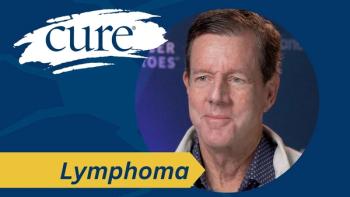
Survivorship Care Plans Get an Update
To further the goal of every survivor receiving a survivorship care plan, the American Society of Clinical Oncology unveiled a new two-page template, updated from its 2006 original.
For the past decade, patients have been encouraged to have a survivorship care plan (SCPs) in hand upon treatment completion. And while there have been inroads in implementing SCPs, the stark reality is that many of the 14.5 million survivors in the United States either receive one that is incomplete or overly complex, or don’t receive one at all.
To further the goal of every survivor receiving an SCP, the American Society of Clinical Oncology (ASCO) committed a working group to developing a new template that could be used at institutions and clinics across the country. At this year’s annual meeting of ASCO’s Quality Care Symposium, the professional organization unveiled a new two-page template, updated from its original that was developed in 2006.
Deborah K. Mayer, chair of the ASCO Survivorship Care Plan Working Group and director of Cancer Survivorship at University of North Carolina Lineberger Comprehensive Cancer Center, said the new template was designed to be user friendly for both the patient and the physician, and to focus on necessary information for the survivor.
“It's been recommended since about 2005 that patients ending treatment for curative intent receive a written survivorship care plan,” she said during the symposium’s press conference in late October. “This new template was designed to be easier to use, focused on more essential information that the survivor needed and the primary care physician, and required less time to complete.”
While the new SCP template offers a more concise document for practitioners looking for guidance for their patients, it is unlikely that it will be used across the board, such as within institutions that have already successfully established their own SCPs.
“I don’t think that there is a one size that fits all for doing this,” says Patricia Ganz, medical oncologist and director of the UCLA-LIVESTRONG Survivorship Center of Excellence at the Jonsson Comprehensive Cancer Center in Los Angeles. “Some people use shorter versions and others longer. It depends on the goal and who you are communicating with.”
As with any patient, an individualized treatment plan may come with an individualized SCP, one that may be a modification of the ASCO template or something original that meets the needs of the patient and his or her medical team.
“The real focus should be on what is told to the patient about coordination of care, follow-up surveillance and health promotion. Just having something in a document is not sufficient. It is the process,” says Ganz, a founding member of the National Coalition for Cancer Survivorship.
There are certain components that are needed in each SPC, including information on prevention of new cancers, surveillance for recurrence, intervention for long-term and late effects, and coordination of care and communication with a primary-care physician. With future advancements in treatment, surveillance and long-term care, SCPs will also evolve over time.
“We do need to know the treatments someone has received. For example, 10 years from now we may find out that a targeted therapy has some late effect that was unknown. If it is on the treatment summary, then the patient can be alerted to the risk,” says Ganz.
Once an SCP is completed, a copy should be given to the patient and his or her primary-care physician.
“Patients should know that they should be receiving one of these at the end of treatment, and if they don’t receive one they should be asking their oncology team for one,” Mayer said.




